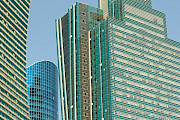The public debt of Kazakhstan in 2022 increased by 15.2% and amounted to 25.3 trillion tenge (or $54.7 billion). At the same time, most of the public debt - 66% on average over the past 5 years - falls on domestic debt, which is more manageable and less risky. In 2022, its share rose to 69%, and domestic debt amounted to 17.5 trillion tenge ($37.8 billion), Kazakh analytical agency Jusan Analytics reported.
In order to understand whether we have a large public debt, we should compare it with the indicators of other countries of the world.
The agency's analysts compared the ratio of public debt to GDP and the budget debt burden ratio (the amount of public debt and budget expenditures for its servicing) of other countries, preliminary dividing them into three groups by credit rating: A, BBB, BB and below.
Among the countries with a high country rating, high public debt included: Japan - 229.1% of GDP, Singapore - 167.8% and the United States - 129.1%. At the same time, this group of countries takes on average about 10% of budget expenditures to service the debt.
The second category of countries with public debt over 100% includes Italy (144.7%) and Portugal (113.8%). Kazakhstan has the lowest level of public debt in this category - only 24.9% of GDP, while debt service costs are 7.3%.
In the third category, Greece (178.2%) and Nigeria (20.2%) take the first and last place in terms of public debt. In this category is the country whose debt service makes up more than half of the budget - Egypt (54.0%).

However, the presence of a high level of debt to GDP cannot be unequivocally interpreted as the existence of significant problems for the country. The most striking example is the US debt-to-GDP ratio. The high importance of debt with a low level of payments and a high assessment of investors for its possible refinancing, according to experts, neutralizes the negative.
In order to understand the situation with the debt burden, analysts have developed their own Debt Sustainability Index of the country, calculated as the geometric mean of three indicators.
According to the analysis, Pakistan, Egypt, Argentina, Brazil and Nigeria have the highest debt load and high investment risk. A reliable rating is noted in 25 countries, among which is Kazakhstan.
CentralasianLIGHT.org
April 27, 2023




